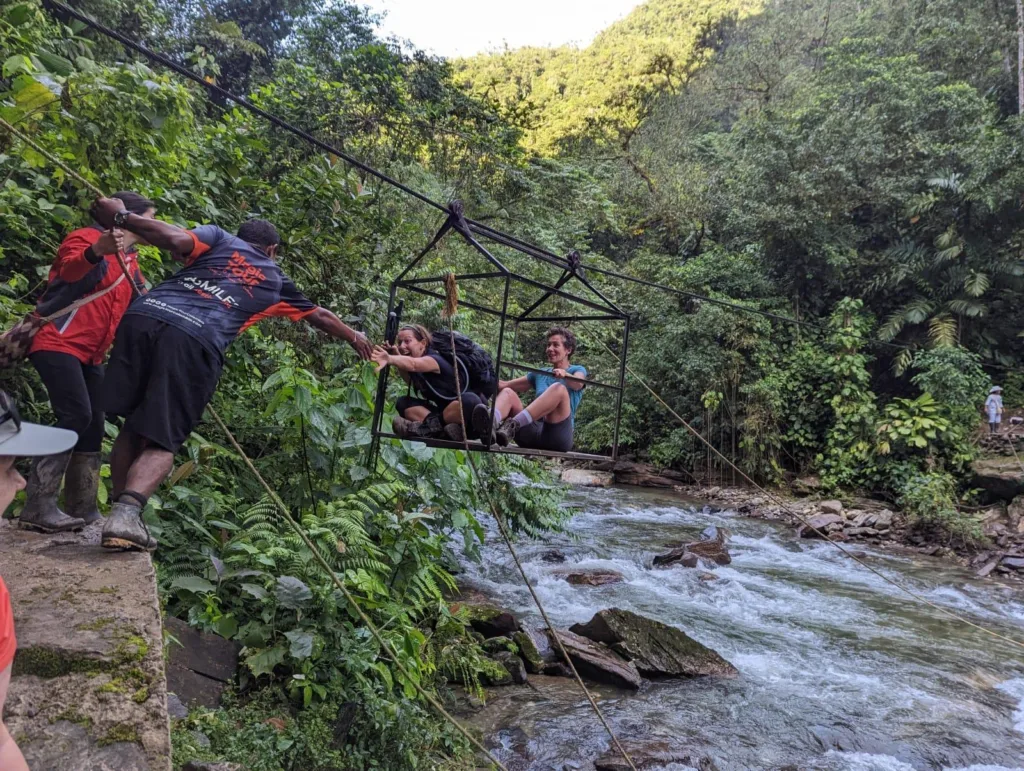When people think of mountains, they typically picture a cold, rocky, snow-covered peak. That is certainly not the case here. Colombia’s Lost City Trek transports you into a lush, lively jungle environment, where dense, verdant foliage carpets the mountains and the hillsides ring with the sounds of innumerable birds, insects and primates. There are no barren mountains here. In Colombia’s gorgeous coastal mountain range, you will enjoy a trekking experience like no other. A gloriously vibrant dive into a world of exotic wildlife, isolated indigenous communities and astounding natural beauty. A world that is home to peoples with long and compelling histories. And one of the country’s most intriguing archaeological sites – the Lost City.
Colombia’s Lost City
The Lost City is situated deep within the Colombian jungle, in the Sierra Nevada de Santa Marta. The range sits just 42 km from the spectacular Caribbean coast and extends up to 5,700 metres above sea level, making it the highest coastal mountain range in the world. Famed for its steep climbs, fast-flowing rivers and dense vegetation, the Sierra Nevada de Santa Marta is a challenging environment and remains relatively undeveloped. The region around the Lost City is an excellent example of how difficult this terrain can be, as the Lost City itself is still impossible to access by road.
Thought to have been built in 800 AD, the Lost City predates Peru’s Machu Picchu by approximately 650 years. It incorporates more than 170 stone terraces and numerous public spaces and connecting “streets”. 1,200 stone steps hewn from the rockside lead up to the city. Unlike many other settlements in the region, the Lost City and its inhabitants appear to have survived the initial influx of Europeans during the Spanish Conquest. However, the city was abandoned in the 1600s. Most likely due to population decline resulting from introduced diseases, rather than military conquest.
What is the Lost City?
The Ciudad Perdida (literally Lost City) was “rediscovered” by the wider world in 1973. Targeted by huaqueros – archaeological looters – the site was the subject of a concerted effort by Colombian archaeologists to preserve the country’s historical heritage and prevent more valuable artefacts from reaching the black market and being lost forever.
In 1936, following a long and arduous expedition through the thick jungle vegetation, the archaeologists came to be known as El Infierno Verde – the Green Hell – the group reached the Lost City and began working to document the site. It soon became clear that this was arguably Colombia’s most important archaeological site and a vital link to the nation’s pre-Hispanic past.
Crucially, the area surrounding the site was home to the indigenous Wiwa, Kogi, Arhuaco, and Kankuamo communities. These peoples are the living descendants of the original Tairona inhabitants, have always known of the site’s existence and often visited it. They would play a critical role in helping archaeologists understand the Lost City and its significance.
Though access to the site was imperilled during the Colombian Civil War and cartel years, it was restored in 2006 and the Lost City is now completely safe to visit. However, this period of civil strife has ensured that the site remains relatively isolated and untouched. Though you may not have to tackle the overwhelming foliage of el infierno verde anymore, it is still a challenging trek that requires good preparation.
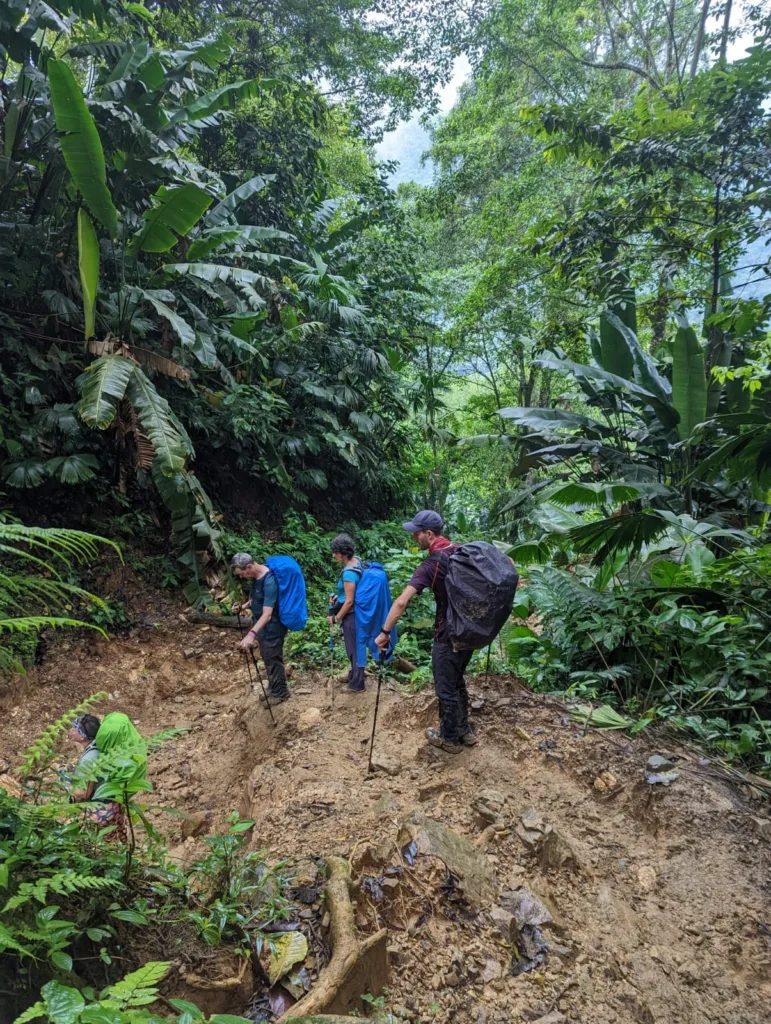
Who lived in the Lost City?
The Lost City was built by and inhabited by the Tairona people, who resided in the area from around 1 AD. The Tairona community consisted of a federation of towns, with the Lost City acting as its political, commercial and cultural capital. Experts estimate the city, at its peak, was home to approximately 8,000 inhabitants. Though anthropologists’ understanding of the Tairona is still fragmented, we do know that they were talented metallurgists and particularly adept with precious metals, such as gold. A 16th-century Spanish priest and invader, Juan de Castellanos, described the Tairona as ‘wearing patterned capes, headdresses of feathers, and necklaces of beads, mother of pearl, carnelian, and gold’ (National Geographic).
Who is the Lost City expedition for?
The Lost City expedition is for anyone seeking a unique jungle trekking experience that centres on fascinating indigenous cultures and South American history. While the expedition does not involve the ascent or altitude of some of our summit-centred expeditions, many participants say it is tougher than both Kilimanjaro and Machu Picchu. As such, good physical preparation is a must. But we also recommend doing a little pre-expedition intellectual preparation. Reading up on the history and culture of the area will help you get the most from the experience and enable you to engage with knowledgeable local guides in a far more rewarding way.
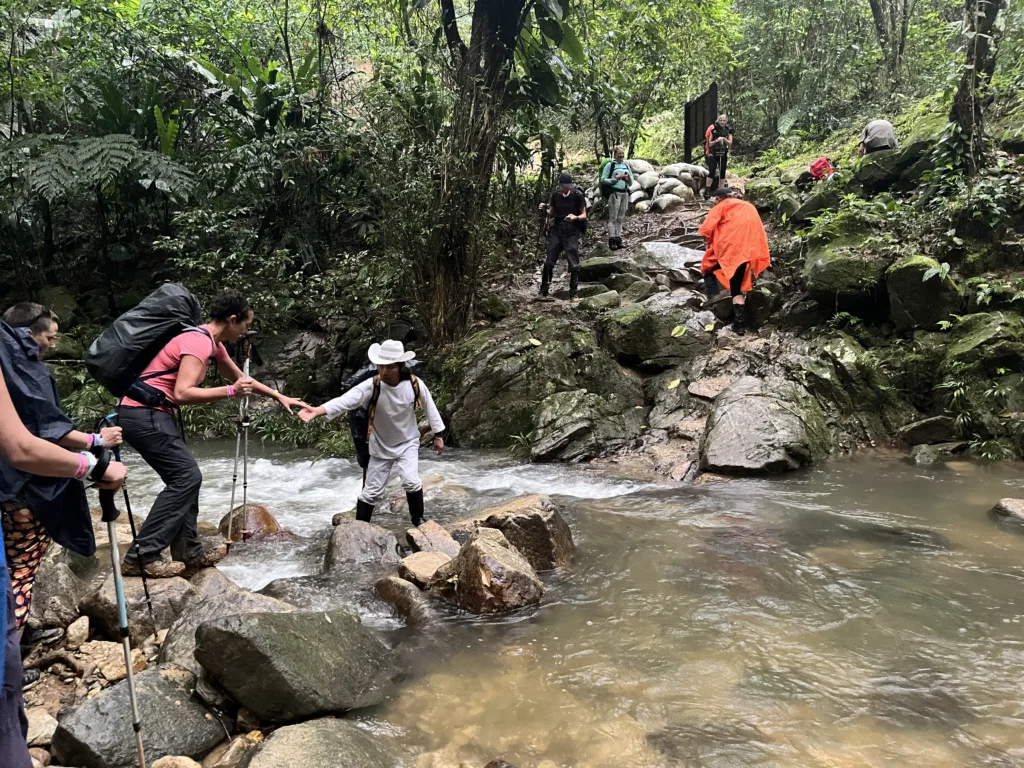
A sample Lost City itinerary
Colombia is a fair distance from the UK and there is a lot to see and do in the Santa Marta area. Consequently, many participants want to spend time exploring the region on either side of the four days it takes to trek to the Lost City. For instance, the 360 Lost City Expedition is a 12-day experience (including travel days). However, an itinerary for the trek to the Lost City alone would look like this.
Day One
Most expeditions depart from Machete Paleo, as it is relatively easy to access via 4×4. Following a dirt track, trekkers slowly leave the farmlands behind and enter the dense jungle vegetation. The sound of the surrounding wildlife is remarkable and there is a good chance you will see howler monkeys, toucans and lizards. Particularly if you are accompanied by an experienced guide.
The jungle is tough going, with root-covered, slippery trails ensuring you have to take care. The humidity only adds to the physical challenge. Towards the end of the day, a long downhill stretch switches quickly to a sharp ascent up to 620 metres. It is then a steady downhill trek to the first night’s camp. In total, you are looking at around five to seven hours of trekking.
Day Two
Day two starts early and takes us through the Kogui indigenous reserve. It is a fantastic opportunity to learn about the sacred traditions of the indigenous Wiwa and Kogui communities. The Kogui’s stewardship of the immediate environment and their ability to maintain ecological balance is particularly interesting.
Later in the day, the trail will join the Buritaca River and you will follow the water up the valley. You will pass Mutanshi, a Kogui village that plays a unique ceremonial role in the culture, and have the opportunity to refresh and cool down in the river. Eventually, trekkers arrive at Paraiso Teyuna, the camp at the base of the Lost City.
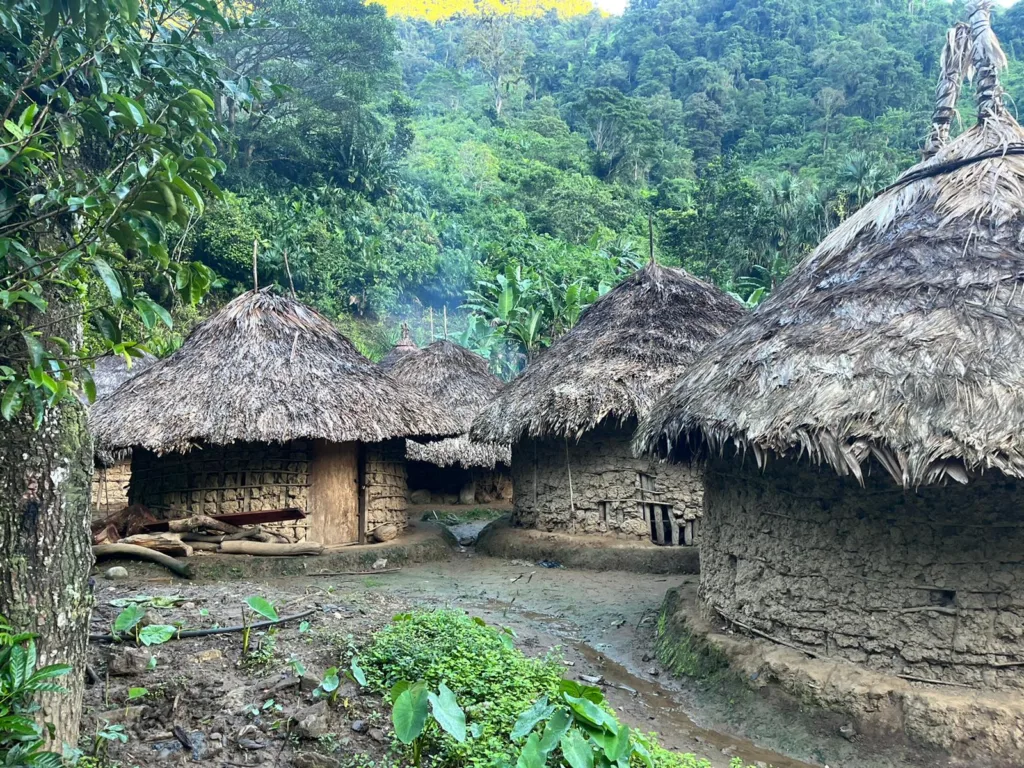
Day Three
Day three is arrival day. It is time to enter the Lost City. Sitting at 1,190 metres, the city is positioned atop 1,200 steps that wind up through the forest. It is not an easy climb, but it is certainly worth it. We highly recommend travelling with a trusted guide for this part of the journey (360 Expeditions works with a great team from the local Wiwa community), as a good understanding of the archaeology, history and importance of the site depends on their expertise.
Having taken the time to explore the Lost City and soak up the breathtaking views of the mountains, you descend back to Paraiso Teyuna for another night beneath the stars.
Day Four
The trekking on day four sees you head back toward the coast. In doing so, you will enter Kogi land. A semi-nomadic people, the Kogi spend much of their time away from their villages, only returning sporadically. With the right guide, you will learn a considerable amount about this incredible way of life. The same goes for the Wiwa people, who are considered direct descendants of the Lost City’s Tairona. On 360’s expedition, our Wiwa guides can provide unparalleled insight into the community’s beliefs, traditions and manufacturing techniques.
Of course, there is also plenty of jungle trekking to enjoy. Coastal accommodation most likely awaits. As do all the luxuries that come with it.
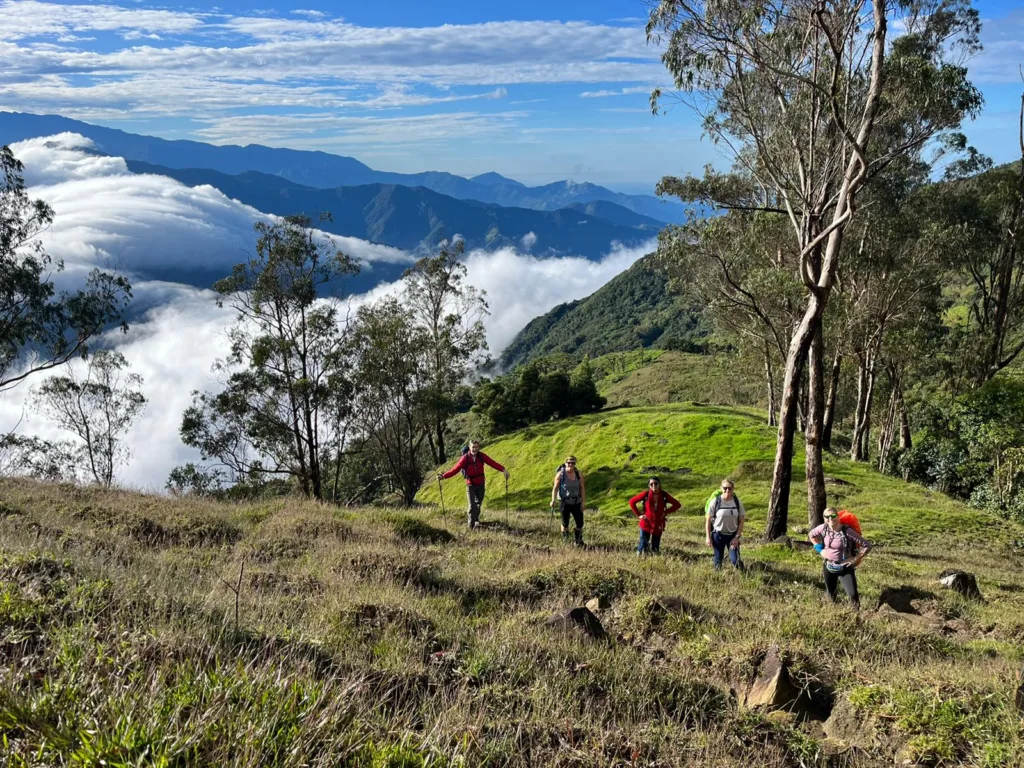
Additional trekking experiences
To illustrate the type of additional experiences you can enjoy before or after the Lost City trek, we have included short sections on the activities we include on the 360 expedition.
Minca
Minca is a striking mountain town that attracts adventurers, travellers and nature enthusiasts due to its brilliant location and lush scenery. Visitors can head to one of the local coffee plantations to learn how coffee is made and sample one of the region’s most famous exports. Minca is also home to excellent waterfalls – the best place to cool off and shake off that jungle humidity. If wildlife is your thing, the local monkeys, toucans and parrots are just waiting to be discovered.
Bunkuany Trek
The Bunkuany Trek starts in El Boqueron, which requires permission to enter from the local community, and rises up through the low mountains of the Sierra Nevada de Santa Marta. Your intended destination is Bunkuany – another lost city built by the Taironas. From there, you head to La Playita Farm to rest and recharge overnight. The second day of trekking weaves through the beautiful rainforest to the indigenous village of Teiku. The Bunkuany Trek is a fantastic way to get to know more about the indigenous people and accustom yourself to jungle trekking before you head to the Lost City, and is a great introduction to the region.
To see how all this fits together into a 12-day trekking experience, check out the 360 Expeditions Colombia Bunkuany & Lost City Trek itinerary.
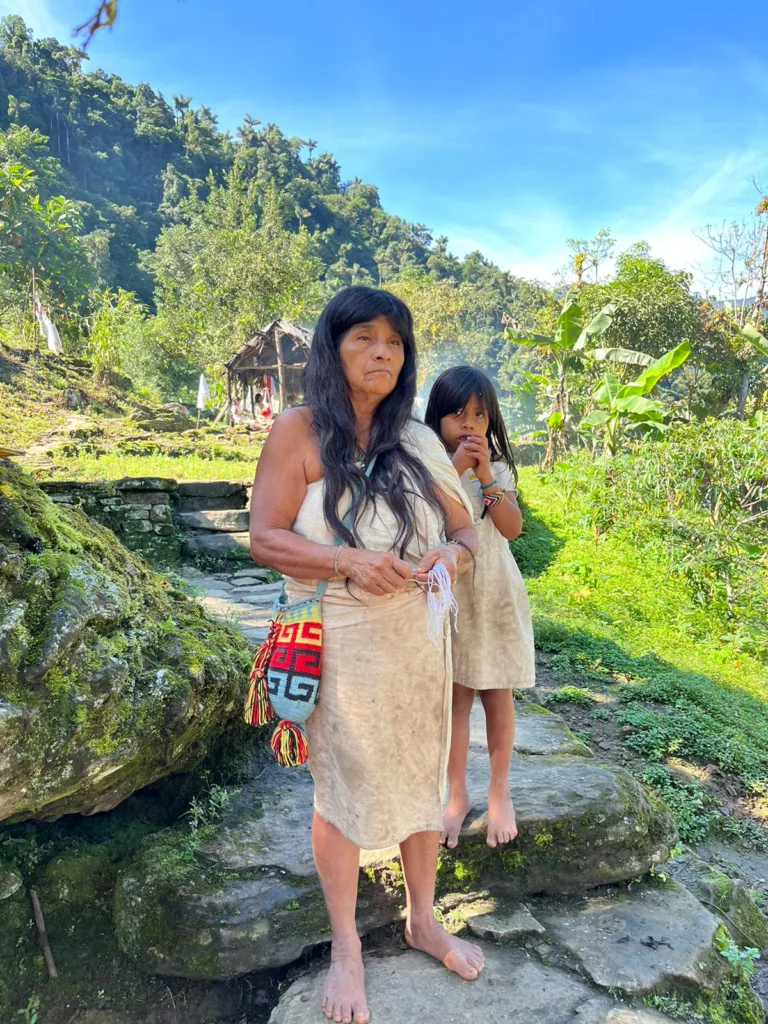
What time of the year?
The Sierra Nevada de Santa Marta experiences a dry season from mid-November to March and a rainy season between April to May and September to November. It is possible to do the trek all year round but we recommend aiming for the period running from the end of January through to March or mid-November to December. While late December typically provides the optimal climatic conditions, it is also the busiest time of year, as it coincides with the holidays. For the best possible experience, we think it is best to avoid this busy stretch.
What training and preparation is required?
Quite a lot. We recommend participants are comfortable with a weekly training load of three one-hour weekday walks, a four-hour weekend walk and a few short cardiovascular sessions. If you feel you are handling that well, you should be in good enough physical shape to enjoy the trek. Build up to this training load gradually and try to prepare over an extended period. Physical preparation is most effective when you increase the frequency, duration or intensity of your training slowly, over a matter of weeks. In many cases, doing too much too quickly or rushing to cram a lot of training into a short period is counter-productive.
For a more comprehensive account of the training required for the Lost City expedition, check out the 360 trek guide. We have a detailed section on training at the bottom of the document.
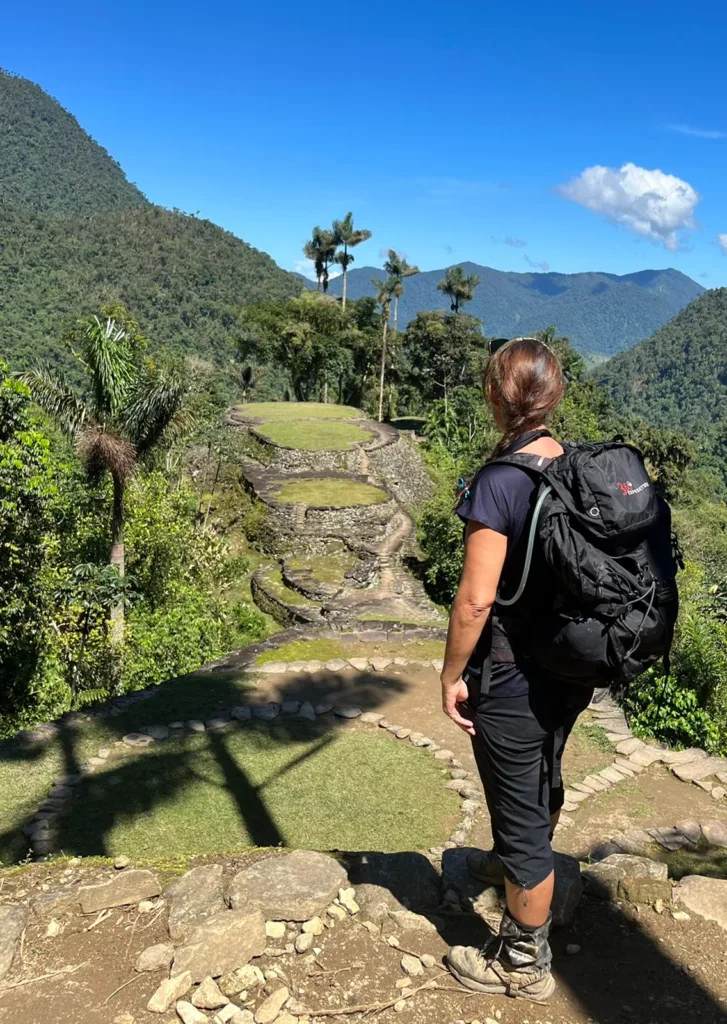
The Lost City trek with 360 Expeditions
At 360 Expeditions, our extensive trekking expertise and experience in Colombia enable us to organise and deliver the perfect Lost City trek. Our Colombia Lost City Trek begins in Santa Marta on Colombia’s Caribbean coast, heads to Minca, and continues with the two-day Bunkuany trek. Then, it is time for the Lost City Trek itself. A day in the vibrant town of Cartagena rounds out the adventure.
While our itinerary has been honed to perfection, enabling you to fit in a lot without ever feeling rushed, our local guides are the real stars of the show. On a trek like this, access to local knowledge is all-important. The Sierra Nevada de Santa Marta is home to indigenous cultures that are sufficiently distinct from our own that it is almost impossible to achieve a deeper understanding of their worldview, heritage and history without directly interacting with those people. On 360 treks, we work with local Wiwa guides who provide that direct connection. We cannot overstate just how integral they are to getting the most from your Lost City expedition.
To learn more about the trek, head to the 360 Expeditions Colombia Lost City Trek and check out our itinerary and FAQs. Alternatively, contact the 360 Expeditions team directly if you need assistance or have further questions.
